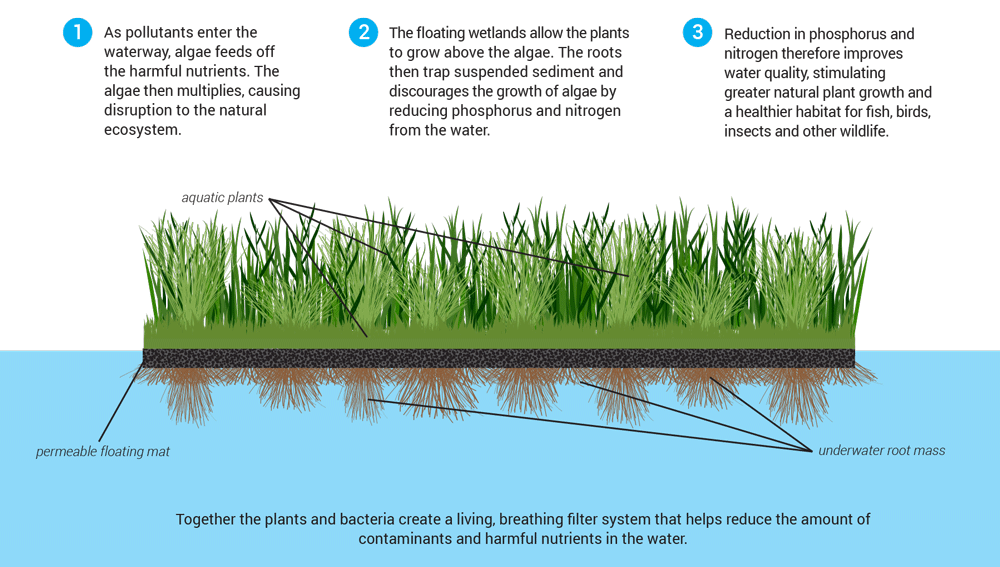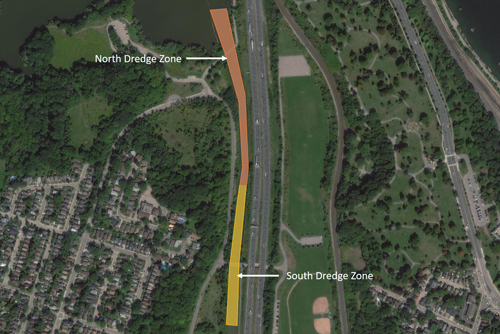Chedoke Creek Remediation

Chedoke Creek updates provided to Hamilton City Council and Standing Committees.

Chedoke Creek Remediation Workplan
The City of Hamilton was served a Ministry of the Environment, Conservation and Parks (MECP) Order on December 4, 2020, as a result of the Main/King Combined Sewer Overflow discharge that occurred between January 2014 and July 2018. The City of Hamilton has been working closely with the MECP and the Royal Botanical Gardens (RBG) to develop a remediation workplan for both Chedoke Creek and Cootes Paradise in response to the Order.
Chedoke Creek Targeted Dredging
The goal of the targeted dredge project is to improve the condition of the creek prior to the beginning of the discharge event. As indicated in the MECP approved Chedoke Creek Workplan, the City implemented short term offsetting remediation projects in areas around lower Chedoke Creek and Princess Point to further improve the condition of the water. The Cootes Paradise Workplan addresses the long term offsetting work required by the order. The goal of the Cootes Paradise Workplan is to improve the quality of water into both Chedoke Creek and the receiving bodies of water.
Project Update:
On December 20, 2022, the MECP Director approved the City’s requested deadline extension to December 31, 2023, with all other items in the Order remaining in effect, and unaltered. On March 3, 2023, the MECP Director issued a revised amendment which requires that the in-water targeted dredging work be completed by August 31, 2023, with the remaining activities in the approved Chedoke Creek Workplan completed by December 31, 2023.
Subsequently on March 14, 2023, after positive and collaborative discussions between the City and the MECP, the MECP Director issued a revised amendment, which supports the City’s concerns regarding the previous deadline and still expedites the remediation of Chedoke Creek. As such, the City is now required to complete the in-water targeted dredging work on or before October 31, 2023. On October 13, 2023, due to the unseasonably wet weather experienced through July and August, as well as equipment challenges caused by larger rocks and unexpected materials within the dredged footprint, the City of Hamilton requested a 1-month extension moving the in-water work deadline from October 31, 2023, to November 30, 2023. On October 30, 2023, the MECP granted the extension requiring the City of Hamilton to complete all dredging activities by November 30, 2023, and complete the remaining activities in the approved Chedoke Creek Workplan by December 31, 2023.
On November 17, 2023, the project team successfully completed the targeted dredging activities, concluding the four-month effort to remove sediment from the bottom of Chedoke Creek.
The transportation of the dried sediment off the Kay Drage Park site subsequently began on December 1, 2023. As required by the Order, all of the approximately 16,000 tonnes of sediment was disposed by December 31, 2023. Approximately 300 truckloads was needed to transport all the sediment to approved landfills
Offsetting projects, removal of sediment (targeted dredging) and potential impacts to the community
Frequently Asked Questions
The Chedoke Creek Workplan outlines the steps associated with targeted dredging in Chedoke Creek. This work will remove nutrient laden sediment from the creek bottom and is scheduled to be completed before the end of 2023. The goal of the targeted dredge project is to improve the condition of the creek prior to the beginning of the discharge event.
The Cootes Paradise Workplan addresses the long-term offsetting work required by the order. The goal of the Cootes Paradise Workplan is to improve the quality of water into both Chedoke Creek and the receiving bodies of water.
On August 14, 2024 the City received MECP approval of the Chedoke Creek Workplan Post Work Report, summarizing targeted dredging project activities that addressed MECP Director’s Order 1-PE3L3.




